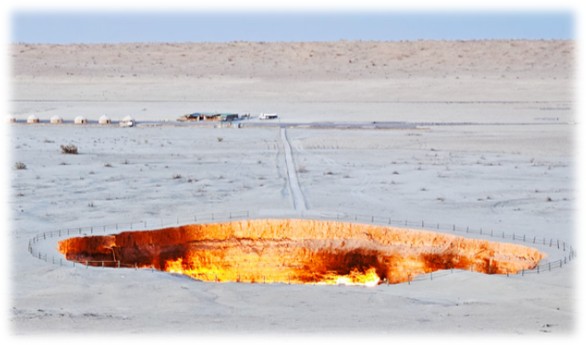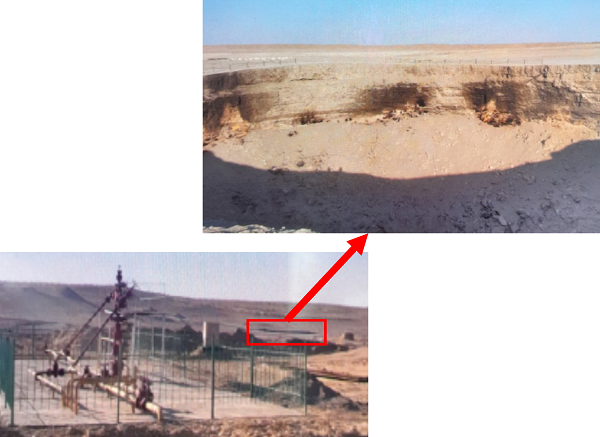The Darvaza Crater, famously known as the “Gates of Hell,” has been a fiery landmark in Turkmenistan’s Karakum Desert since 1971. Formed during a drilling accident at the Chaljulba structure within the Zeagli-Dervezinskaya group of fields, the crater was ignited to prevent toxic gas from harming people and livestock. Initially expected to burn out in days or be extinguished by water influx, the crater continues to burn due to gas seepage from the multi-layered Chaljulba field, as explained by Irina Luryeva, head of the laboratory at the Natural Gas Research Institute of TurkmenGaz.
At the TESC 2025 international scientific and practical conference, themed “Environmental Aspects of Innovative Technologies in Hydrocarbon Development” Irina Luryeva shared insights from recent observations. From April 2023 onward, satellite imagery provided by Capterio revealed that during summer, when gas production drops due to seasonal demand, the crater’s burning intensity increases. However, as gas demand rises in early fall, increased extraction from the single operating well at Chaljulba led to a noticeable decline in the crater’s flames.
Turkmen scientists, led by the Natural Gas Research Institute decided that intensifying gas extraction is the key to controlling the crater’s emissions. A targeted work program for the Chaljulba field, developed by the institute, is being successfully implemented by TurkmenGaz’s production units.
Key Milestones
- July 2024: A monitoring well was commissioned, yielding an industrial flow of low-pressure gas (90,000 m³/day) from a depth of 200 meters.
- A distant exploratory well, previously mothballed, was reactivated, producing slightly gasified formation water, indicating low reservoir pressure and water influx—clear signs of controlled gas flow and reduced crater fueling.
- Near the crater, a new well was drilled, delivering a high flow rate of 600,000 m³/day from two horizons.
- December 2024: Two wells are now operational, multiplying the monthly gas extraction rate.
- February 2025: Another well was drilled and tested, achieving a high flow rate of 300,000 m³/day.
The current phase of the program involves reactivating another decommissioned well near the crater to further enhance gas capture and reduce uncontrolled burning.
Darvaza Crater in 2013
Darvaza Crater in 2025
These efforts have proven effective. Since August 2023, the intensity of the crater’s uncontrolled burning has dropped over threefold. Once a massive blaze visible for miles, the “Gates of Hell” now flickers with only small pockets of flame, a testament to Turkmenistan’s proactive measures in managing this unique environmental challenge. ///nCa, 5 June 2025

